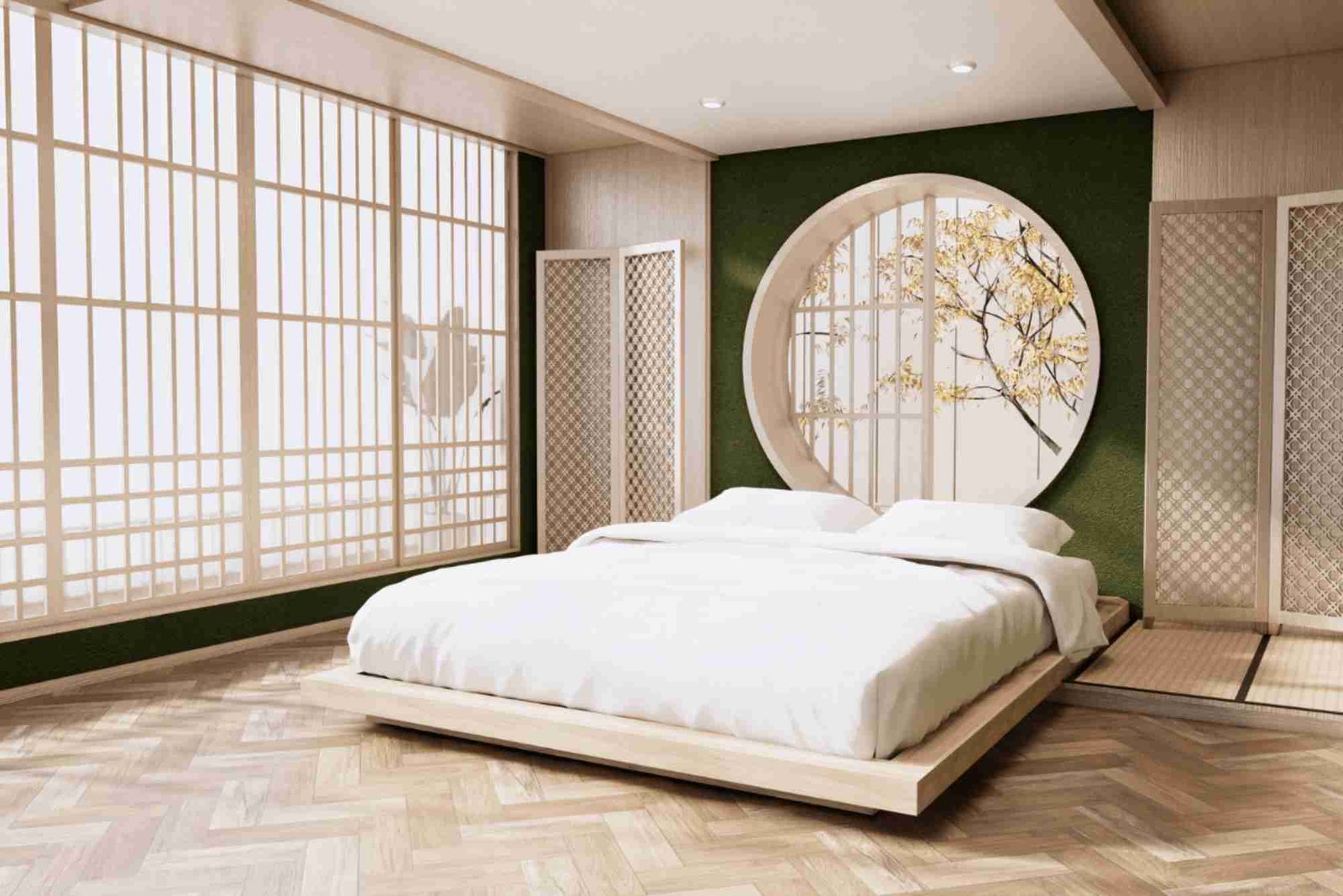Minimalism Meets Comfort
The Japanese style bed has gained popularity for its minimalist, sleek design and unique ability to add calmness and functionality to any bedroom. Originating from Japan’s cultural appreciation of simplicity, these beds emphasize low height, natural materials, and a clutter-free environment. They serve as a practical and aesthetic choice for those wanting a peaceful, Zen-inspired space.
What Is a Japanese Style Bed?
Japanese-style beds, or platform beds, are often low to the ground and commonly consist of a simple wooden frame, sometimes paired with a tatami mat for added authenticity. They are known for their sturdy construction, ease of assembly, and minimalist appearance, which avoids excessive detailing or embellishments.
Key Characteristics of Japanese Style Beds
- Low Height: Close to the ground, providing stability and a sense of groundedness.
- Simple Design: Focus on clean lines and functionality over decor.
- Natural Materials: Usually made of wood or bamboo, echoing a connection to nature.
- No Headboard (Typically): Open and uncluttered space above the bed for an airy feel.
Benefits of a Japanese Style Bed
Japanese-style beds are more than just a design trend. They come with many practical and psychological benefits that can transform a bedroom into a serene sanctuary.
Enhanced Minimalism
Japanese-style beds promote a minimalist lifestyle by encouraging an uncluttered environment. This approach to bedroom design allows for fewer distractions and promotes mental clarity, making it easier to relax and unwind.
Closer Connection to Nature
The low profile and natural materials of Japanese beds help create a soothing, organic look that fosters a peaceful sleeping space. Additionally, many Japanese beds use wood with minimal or no treatment, enhancing the natural appeal.
Space Efficiency
Due to their simple structure, Japanese beds make a room feel more spacious. By minimizing the height and unnecessary elements, these beds can give even a smaller bedroom an open, airy atmosphere.
Encourages Better Sleep Habits
Japanese-style beds often support a firmer sleeping surface. While a tatami mat or futon may seem less plush than Western mattresses, it aligns more naturally with the spine, which can aid in improving sleep posture.
Choosing the Right Japanese Style Bed
When selecting a Japanese-style bed, keep in mind various options that align with the traditional aesthetics while meeting your personal needs.
Tatami Bed Frames
Tatami mats are often placed within the wooden frame, offering a traditional look and providing a cool, firm surface for mattresses or futons. Japanese Style Bed This type of bed brings an authentic Japanese feel to the room.
Platform Beds
Platform beds offer flexibility for those who may prefer the style of a Japanese bed with a traditional mattress. These beds are stable, provide good ventilation, and make changing sheets easy.
Futon Beds
Japanese futon beds are versatile, allowing you to roll up the futon mattress and store it when not in use. Futon beds are ideal for those with limited space or a preference for a minimalist bedroom arrangement.
Styling a Room with a Japanese Style Bed
To create an authentic Japanese-inspired bedroom, consider these tips for styling:
- Add Tatami Mats: Place tatami mats around the bed to further embrace the traditional Japanese aesthetic.
- Incorporate Shoji Screens: Shoji screens add a touch of Japanese decor while providing privacy and soft lighting.
- Use Neutral Colors: Go for earth tones, soft whites, and gentle shades of gray or beige to keep the room calming.
- Minimalist Decor: Select a few, high-quality decor items to keep the focus on simplicity and function.
- Include Indoor Plants: Bamboo or bonsai plants can enhance the space with a natural touch and contribute to a tranquil atmosphere.
Maintenance Tips for Japanese Style Beds
Japanese-style beds require simple but regular care to maintain their look and durability.
- Dust Regularly: Dust the frame and clean any surrounding tatami mats.
- Air Out Futons: If using a futon, air it out frequently to maintain freshness.
- Avoid Moisture: Protect wooden frames from excess moisture to prevent damage or warping.
- Rotate Mattresses or Futons: Rotate futons or mattresses regularly for even wear.
FAQs: Japanese Style Bed
Q: What is a Japanese-style bed?
It’s a low, minimalist bed frame, often with tatami mats or futons, emphasizing simplicity.
Q: Are Japanese beds good for back support?
Yes, they support a firmer sleeping surface that helps align the spine naturally.
Q: Can I use a regular mattress on a Japanese-style bed?
Yes, especially with platform beds, which are versatile with different mattress types.
Q: Do I need a headboard for a Japanese-style bed?
Traditional Japanese-style beds typically do not include a headboard for a cleaner, open look.
Embracing a Japanese-style bed can bring elegance, functionality, and peace to your sleeping space. For anyone seeking a minimalist aesthetic and a restful ambiance, this bed style might just be the perfect choice.




